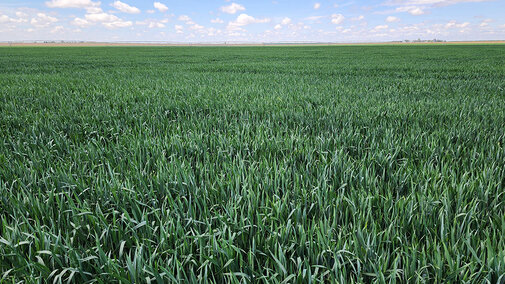Wheat disease surveys were conducted May 14-16 in the southeast, south-central, southwest and Panhandle of Nebraska. Growth stage ranged from flag leaf emerging or emerged in the northern Panhandle to wheat headed or flowering in the southeast.
Disease levels were generally low and some fields had little or no disease (Figure 1). The prevalence of stripe rust (Figure 2) has significantly increased. It is present at low levels in 17 counties in the southern part of the state from east to west (Figure 3), but it was not found in any of the counties visited in the Panhandle. Leaf rust has not been reported in Nebraska as of May 17 (Figure 4).

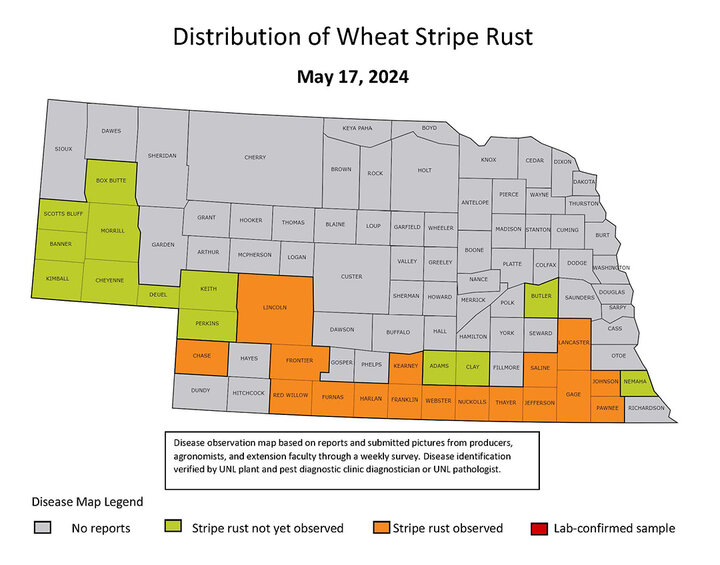
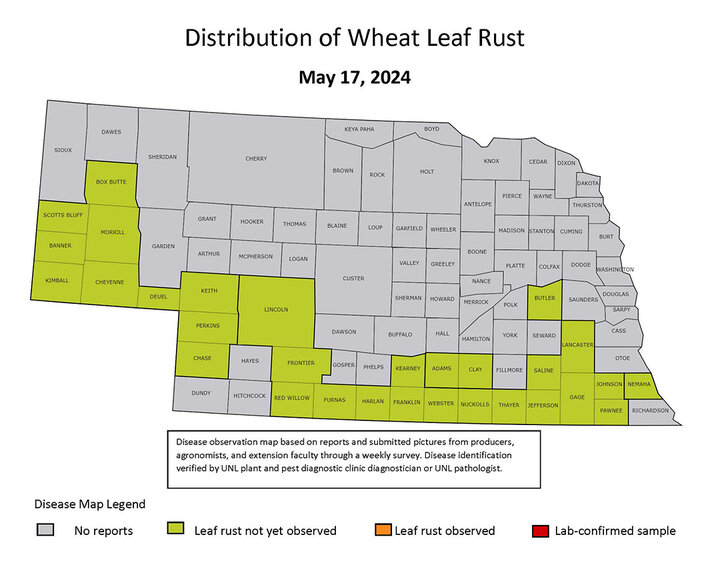
Leaf spot diseases (tan spot and Septoria tritici blotch) were found at low to moderate levels in some fields (Figure 5).
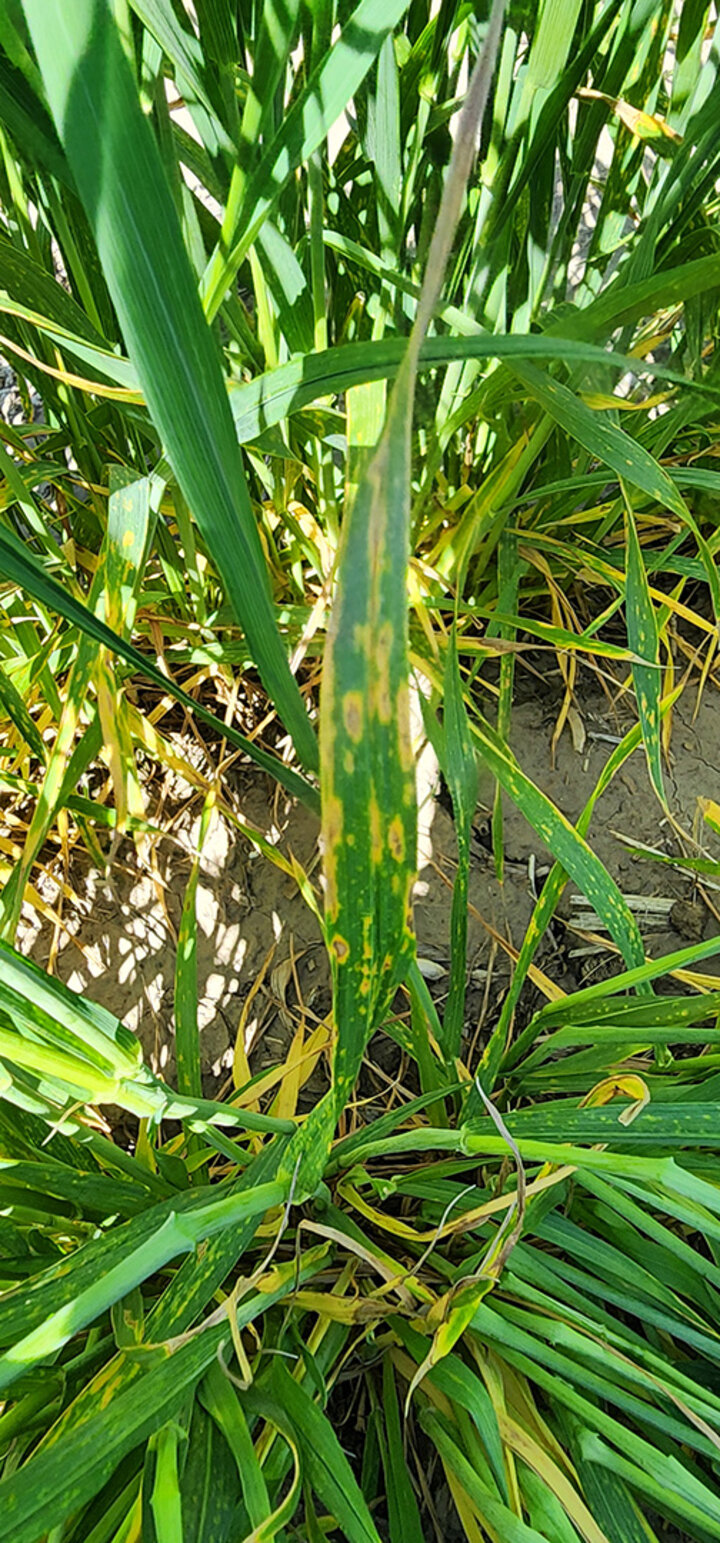
Isolated cases of severe wheat streak mosaic virus disease complex are present in the southeast, south-central and southwest (Figure 6). In all of these cases, volunteer wheat in an adjacent field was not controlled before wheat was planted in the fall of last year.
Management
In southeast, south-central and southwest Nebraska, if wheat is headed, it is recommended to apply a fungicide at early flowering that can suppress Fusarium head blight (FHB) and also control stripe rust and other foliar fungal diseases. Fungicides with good efficacy in suppressing FHB and very good or excellent efficacy in controlling foliar fungal diseases include Prosaro Pro, Miravis Ace, Sphaerex, Caramba, Prosaro and Proline. Read more about FHB management in our companion article this week.
In the Panhandle, scout fields regularly for stripe rust and other foliar fungal diseases. If stripe rust is detected, favorable weather (rainfall) is forecast or prevails, and a susceptible variety is planted, apply a fungicide timed to protect the flag leaf. If stripe rust is detected after heading, apply a fungicide at early flowering that can suppress Fusarium head blight and also control stripe rust and other foliar fungal diseases.
The wheat streak mosaic virus disease complex is managed by controlling volunteer wheat — especially volunteer that emerged as a result of a pre-harvest hailstorm — before planting in the fall. The volunteer must be completely dead at least two weeks before planting. Other cereal crops and weedy grasses can be hosts of both the wheat curl mite vector and the viruses in the disease complex. Control grasses before planting in the fall and avoid planting next to late maturing cereal crops such as corn.
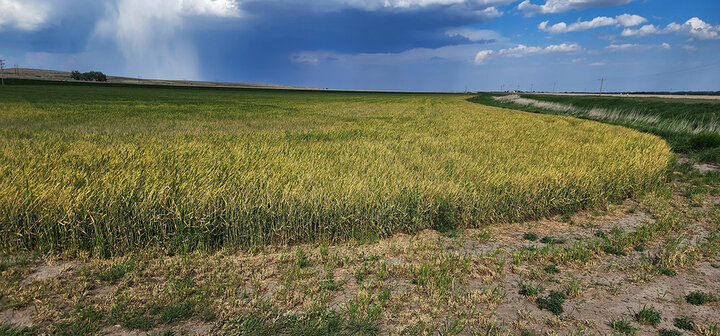
Wheat Disease Survey
Please contribute to the 2024 rust tracking map to help Nebraska Extension monitor the movement of stripe and leaf rust in Nebraska.
